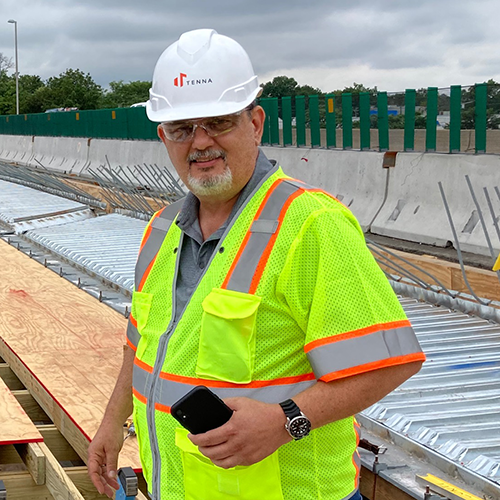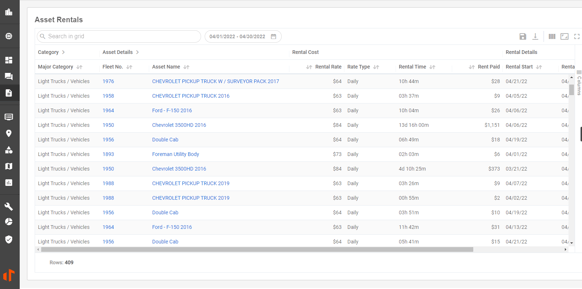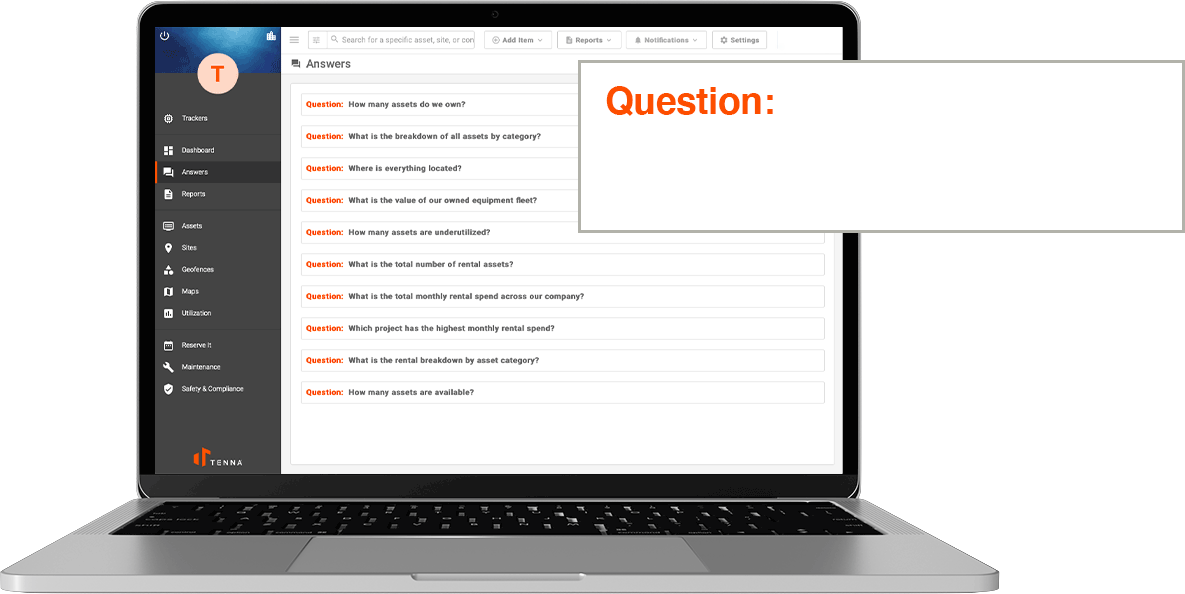
In an uncertain climate, more construction companies are looking to tighten their belts by renting equipment rather than buying. The benefits are easy to see. Rented equipment does not require carrying costs such as expenses for preventative maintenance. Specialty items that are infrequently needed can be quickly acquired and then returned. Large down payments for new equipment can instead be redirected to other business needs—including rising gas prices and rising material costs from supply chain shortages.
 Looking at those advantages makes rental equipment a great alternative. But smart business managers know that to understand how their business is running and where they have opportunities for growth, they need to look at the whole picture. When contractors are already managing complex construction projects—plus managing fleets, work orders, equipment requests, and more—that can mean several different systems with unconnected data and a lot of manual tracking. Managing equipment rentals is yet another layer of complication.
Looking at those advantages makes rental equipment a great alternative. But smart business managers know that to understand how their business is running and where they have opportunities for growth, they need to look at the whole picture. When contractors are already managing complex construction projects—plus managing fleets, work orders, equipment requests, and more—that can mean several different systems with unconnected data and a lot of manual tracking. Managing equipment rentals is yet another layer of complication.
Tenna’s goal is to simplify these management ecosystems for our construction customers. Tenna’s new and unique integration with leading construction equipment rental companies allows Tenna customers to manage their equipment rentals in the same system where they manage their owned assets. With this integration, fleet and project managers instantly have greater visibility into everything happening on a project, while eliminating the need to manually piece together unconnected data from separate systems. More importantly, integrating rental equipment into Tenna supplies cohesive and thorough data about the types of equipment being requested, used, or ignored for more informed decisions about purchasing needs.
Let’s walk through the advantages.
Better Project Management
Tenna users are accustomed to having all data about a project at their fingertips. From equipment requests to dispatching and utilization data, information about every owned asset is accessible to make projects more successful and companies more profitable. When construction companies supplement with rental equipment, they lose that insight or, at best, must manually reconcile two independent systems that don’t speak to each other.
By integrating rental data into Tenna’s system, full transparency is restored. All rented and owned equipment is visible on each project and in the overall equipment fleet. Utilization data is recorded. Geofenced locations are confirmed. Rented assets falling below expected usage can be returned early or moved to another site. Late charges are avoided by quickly finding left behind equipment. Increased project profitability is achieved.
While there are potential savings for renting equipment, don’t discount the savings in time and manpower. Rather than learning new systems from rental companies, employees continue to manage their work within Tenna and avoid time consuming manual data entry and reconciliation.
Better Financial Decisions
Construction companies often find asset management to be a make-or-break task. The wrong decisions, which are typically based on bad and/or missing information, can result in lost bids, late jobs, and unhappy customers. They can also mean needless expenses and cumbersome asset inventory. Viewing comprehensive data on both owned and rented equipment in one place is a game changer.
 Look at your underutilized assets in the Answers tab. These are great opportunities to offload equipment that is seldom requested or needed but is still incurring ownership costs. These assets may be candidates to rent instead of own. On the flipside, look at rented assets and see which are most requested and most used. Are there simply not enough in your asset inventory? Or have you not made the leap to buy any? Regardless of the buy vs. rent decision, Tenna’s integration makes it easy to have the information you need to decide if renting continues to be the most cost-effective choice or if it’s time to invest in your own equipment.
Look at your underutilized assets in the Answers tab. These are great opportunities to offload equipment that is seldom requested or needed but is still incurring ownership costs. These assets may be candidates to rent instead of own. On the flipside, look at rented assets and see which are most requested and most used. Are there simply not enough in your asset inventory? Or have you not made the leap to buy any? Regardless of the buy vs. rent decision, Tenna’s integration makes it easy to have the information you need to decide if renting continues to be the most cost-effective choice or if it’s time to invest in your own equipment.
Maintenance costs are another area to consider. If pieces of equipment are prone to higher maintenance or repair costs, that might result in a company considering renting rather than owning. Similarly, if owned equipment is a limiting factor in deciding which jobs to bid on, renting might be a smart choice. Using Tenna to review data on the allocation and use of owned equipment needed for upcoming jobs will help determine what is needed to purchase, rent, or a combination of both in order to take on more projects.
Watching your expenses with rental companies will also help you find areas where you often accrue late fees or other added costs. Is the time frame that a particular piece of equipment is needed often underestimated or overestimated? Are there certain locations that more frequently leave behind assets and increase late fees? Consolidated data from Tenna’s rental integration makes it easier to spot problem areas, trends, and opportunities for coaching.
Ready to learn more? Give us a call to discuss whether we currently integrate with your preferred rental company.
About Yanni Alexakis
Yanni Alexakis shares his thoughts on the latest on construction asset management.
